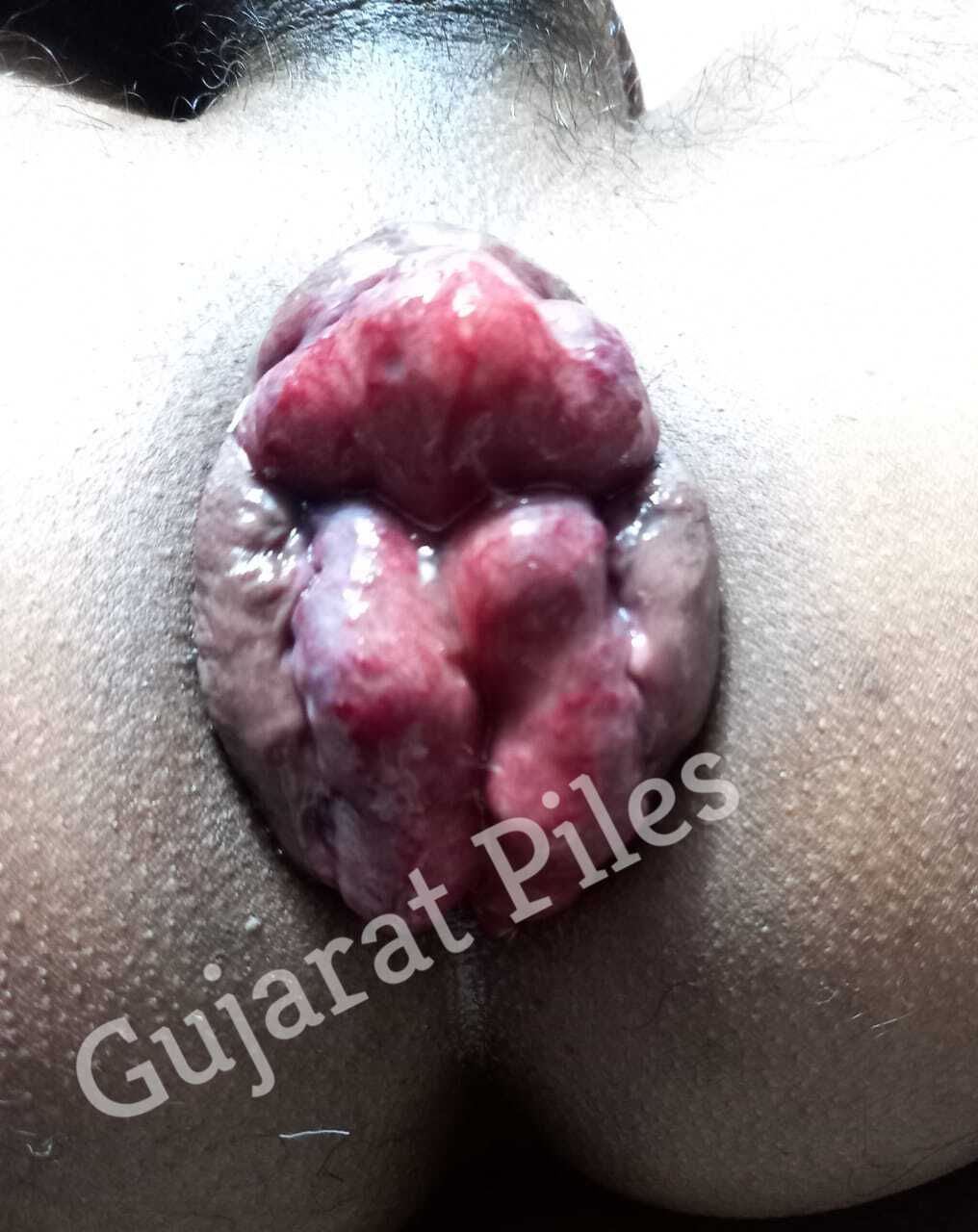
Before treatment
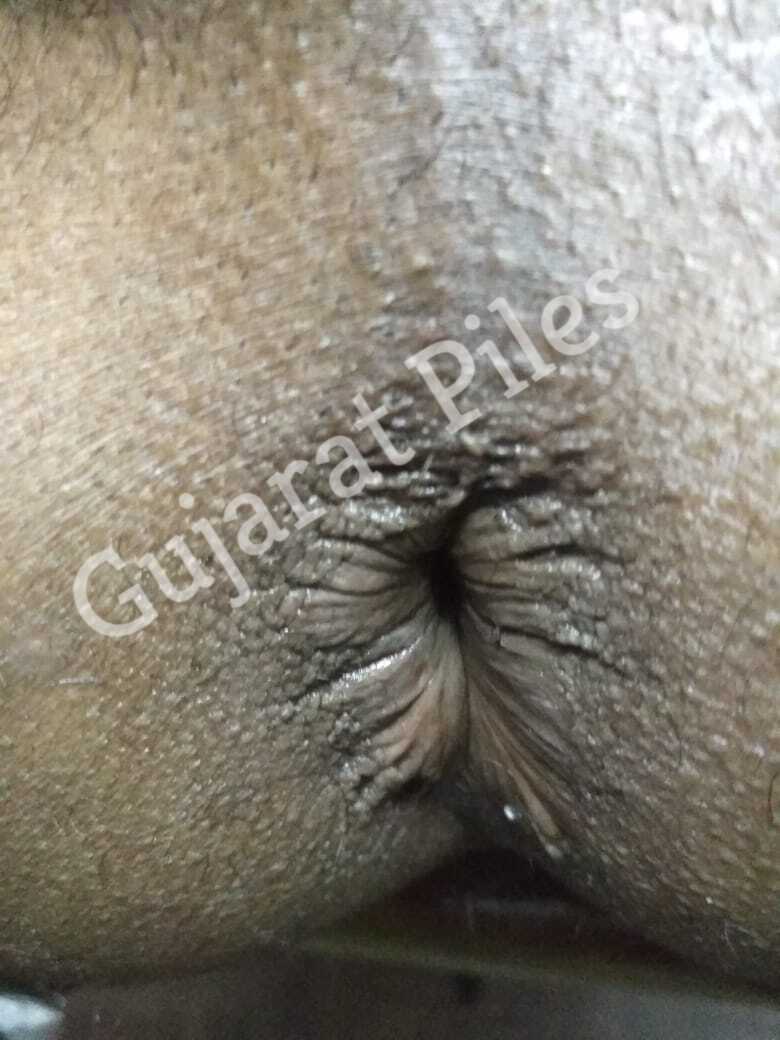
After treatment
PILES TREATMENT
WHAT ARE HEMORRHOIDS?
Haemorrhoids are swollen blood vessels in or around the anus and rectum. The haemorrhoidal veins are located in the lowest part of the rectum and the anus. Sometimes they swell so that the vein walls become stretched, thin, and irritated by passing bowel movements. Haemorrhoids are classified into two general categories: internal and external.
Internal haemorrhoids lie far enough inside the rectum that you can’t see or feel them. They don’t usually hurt because there are few pain-sensing nerves in the rectum. Bleeding may be the only sign that they are there. Sometimes internal haemorrhoids prolapse, or enlarge and protrude outside the anal sphincter. If so, you may be able to see or feel them as moist, pink pads of skin that are pinker than the surrounding area. Prolapsed haemorrhoids may hurt because they become irritated by rubbing from clothing and sitting. They usually recede into the rectum on their own; if they don’t, they can be gently pushed back into place.
External haemorrhoids lie within the anus and are often uncomfortable. If an external haemorrhoid prolapses to the outside (usually in the course of passing a stool), you can see and feel it. Blood clots sometimes form within prolapsed external haemorrhoids, causing an extremely painful condition called a thrombosis. If an external haemorrhoid becomes thrombosed, it can look rather frightening, turning purple or blue, and could possibly bleed. Despite their appearance, thrombosed haemorrhoids are usually not serious and will resolve themselves in about a week. If the pain is unbearable, the thrombosed haemorrhoid can be removed with surgery which stops the pain.
Anal bleeding and pain of any sort is alarming and should be evaluated; it can indicate a life-threatening condition, such as colorectal cancer. Haemorrhoids are the main cause of anal bleeding and are rarely dangerous, but a definite diagnosis from your doctor is essential.
WHAT CAUSES HAEMORRHOIDS?
Anyone at any age can be affected by haemorrhoids. They are very common, with about 50% of people experiencing them at some time in their life. However, they are usually more common in elderly people and during pregnancy. Researchers are not certain what causes haemorrhoids. “Weak” veins – leading to haemorrhoids and other varicose veins - may be inherited.
Diet has a pivotal role in causing – and preventing – haemorrhoids. People who consistently eat a high-fibre diet are less likely to get haemorrhoids, but those who prefer a diet high in processed foods are at greater risk of haemorrhoids. A low-fibre diet or inadequate fluid intake can cause constipation, which can contribute to haemorrhoids in two ways: it promotes straining on the toilet and it also aggravates the haemorrhoids by producing hard stools that further irritate the swollen veins.
WHAT ARE THE SYMPTOMS OF PILES?
The symptoms of haemorrhoids include:
Bright red bleeding from the anus. Blood may streak the bowel movement or the toilet paper. Tenderness or pain during bowel movements.
Painful swelling or a lump near the anus.
Anal itching.
A mucous anal discharge.
HOW DO I KNOW IF I HAVE PILES?
First, your doctor will look at the anal area, perhaps by inserting a lubricated gloved finger or an anoscope (a hollow, lighted tube for viewing the lower few inches of the rectum) or a proctoscope (which works like an anoscope, but provides a more thorough rectal examination).
To see further into the anal canal (into the lower, or sigmoid, colon), sigmoidoscopy may be used, or the entire colon may be viewed with colonoscopy. For both procedures, a lighted, flexible viewing tube is inserted into the rectum. A barium X-ray can show the entire colon’s interior. First a barium enema is given and then X-rays are taken of the lower gastrointestinal tract.
More procedures may be needed to identify internal haemorrhoids or rule out other ailments that frequently cause anal bleeding, such as anal fissure, colitis, Crohn’s disease, and colorectal cancer.
SEEK MEDICAL ADVICE IF:
You have rectal bleeding for the first time, even if you believe you have haemorrhoids. Colon polyps, colitis, Crohn’s disease, and colorectal cancer can also cause rectal bleeding. An accurate diagnosis is essential. You have been diagnosed with haemorrhoids, and you have rectal bleeding that is chronic (daily or weekly) or more profuse than just streaking. Though rare, excessive haemorrhoidal bleeding can cause anaemia.
WHAT ARE THE TREATMENTS FOR PILES?
There are treatments for piles available from pharmacies or through a GP.
Creams, ointments and suppositories can help relieve swelling and inflammation symptoms in the short term. A GP may recommend corticosteroid cream for severe inflammation.
Warm (but not hot) sitz baths are a traditional therapy for piles: sit in about 8 cm of warm water for 15 minutes, several times a day, especially after a bowel movement.
Painkillers, such as paracetamol, can help relieve pain caused by piles. Products with local anaesthetic may be prescribed to treat painful haemorrhoids.
If you are constipated, a GP may recommend using a laxative.
However, these treatments do not get rid of the haemorrhoids themselves.
If you are pregnant, discuss any treatment, including dietary changes, with your doctor before proceeding.
If symptoms persist, your doctor may suggest one of the following procedures. Many can be performed as a day-case:
Injection or sclerotherapy. An internal haemorrhoid can be injected with a solution that creates a scar and closes off the haemorrhoid. The injection will only hurt a little.
Banding. Prolapsed haemorrhoids are often removed using rubber-band ligation. A special tool secures a tiny rubber band around the haemorrhoid, shutting off its blood supply almost instantly. Within a week, the haemorrhoid shrivels and falls off.
Coagulation or cauterisation. Using either an electric probe, a laser beam, or an infrared light, a tiny burn painlessly seals the end of the haemorrhoid, causing it to close off and shrink. This is most useful for Kshar-sutra Ligation.
Surgery. For large internal haemorrhoids or extremely uncomfortable external haemorrhoids (such as thrombosed haemorrhoids that are too painful to live with), your doctor may choose traditional surgery, called haemorrhoidectomy. The success rate for haemorrhoid removal approaches 95%, but unless dietary and lifestyle changes are made, haemorrhoids may recur.
NUTRITION AND DIET
You can prevent constipation by following a high-fibre diet. Meals and snacks should consist primarily of vegetables, fruit, nuts, and whole grains, and as few processed foods and meats as possible. If this is a big change for you, introduce the new foods slowly, to avoid wind.
If you aren’t able to eat enough high-fibre food, supplement your diet with stool softeners or bulk-forming agents. (Avoid laxatives, which may cause diarrhoea that can further irritate the swollen veins.)
Drink at least eight glasses of water each day; if your life is especially active or you live in a hot climate, you will need more.
Monitor your salt intake. Excess salt in the diet causes fluid retention, which means swelling in all veins, including haemorrhoids.
AT-HOME REMEDIE
Try not to sit for hours at a time. If you have to, take breaks: once every hour, get up and move around for at least five minutes. A doughnut-shaped cushion can make sitting more comfortable and ease haemorrhoid pressure and pain.
Insert petroleum jelly just inside the anus to make bowel movements less painful.
Consider dabbing witch hazel (a soothing anti-inflammatory agent) on irritated haemorrhoids to reduce pain
and
itching.
Resist the temptation to scratch haemorrhoids, as it makes everything worse: the inflamed veins become more
irritated; the skin around them becomes damaged; and the itching itself intensifies. Instead, to help reduce
swelling and irritation consider using an over-the-counter steroid cream to the skin (not inside the anus –
on
the outside only) and a cold pack. You might try over-the-counter haemorrhoidal creams for relief from
itching.
If you need a pain reliever, consider using paracetamol.
Bathe regularly to keep the anal area clean, but be gentle: excessive scrubbing, especially with soap, can
intensify burning and irritation.
Don’t sit on the toilet for more than five minutes at a time, and when wiping, be gentle. If toilet paper is
irritating, try dampening it first, or use cotton balls or alcohol-free baby wipes. You may prefer washing
yourself and then dabbing the area dry.
When performing any task that requires exertion, be sure to breathe evenly. It’s common to hold your breath
during exertion, and if you do, you’re straining and contributing to haemorrhoid swelling.
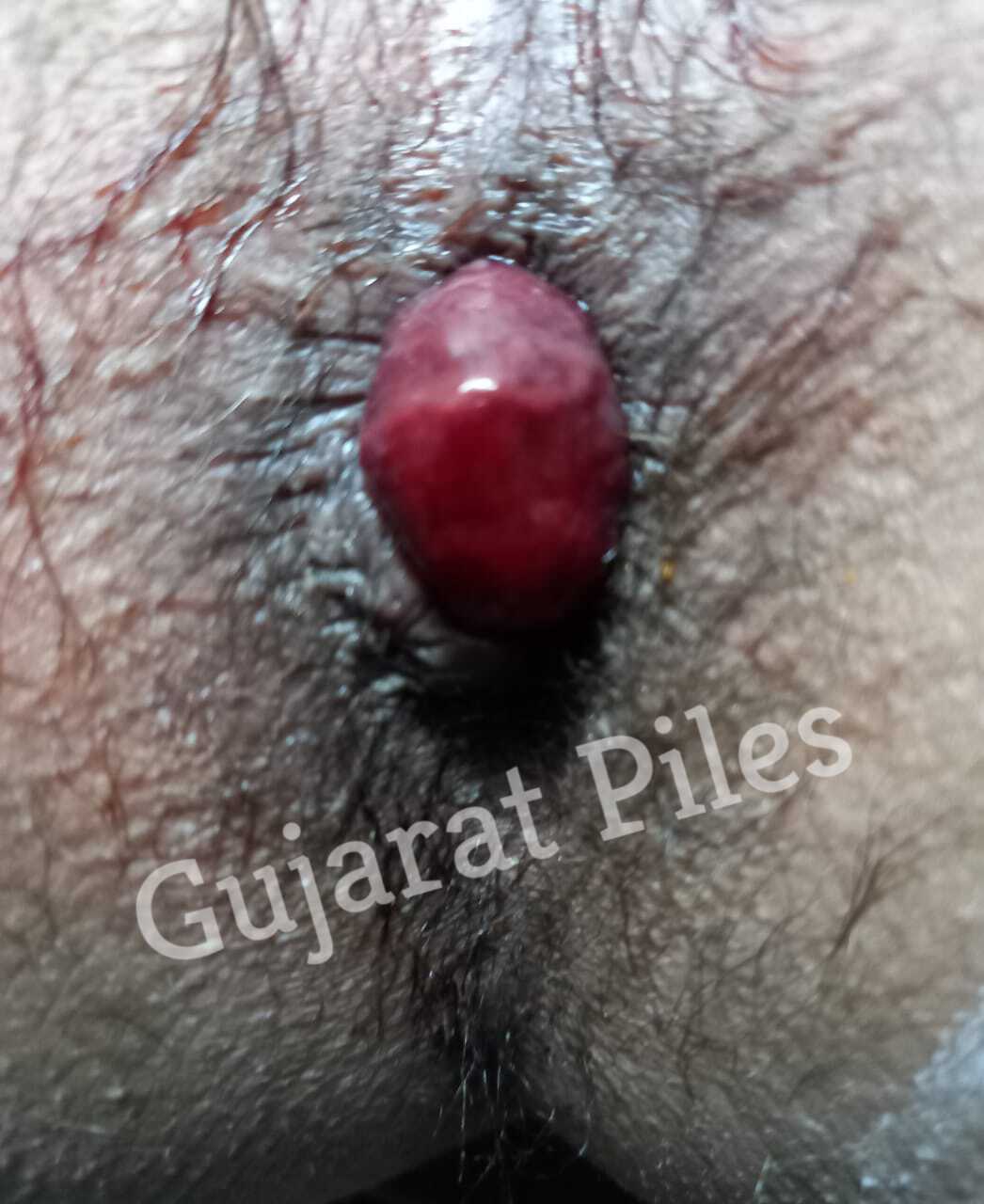
Severe Bleeding Piles
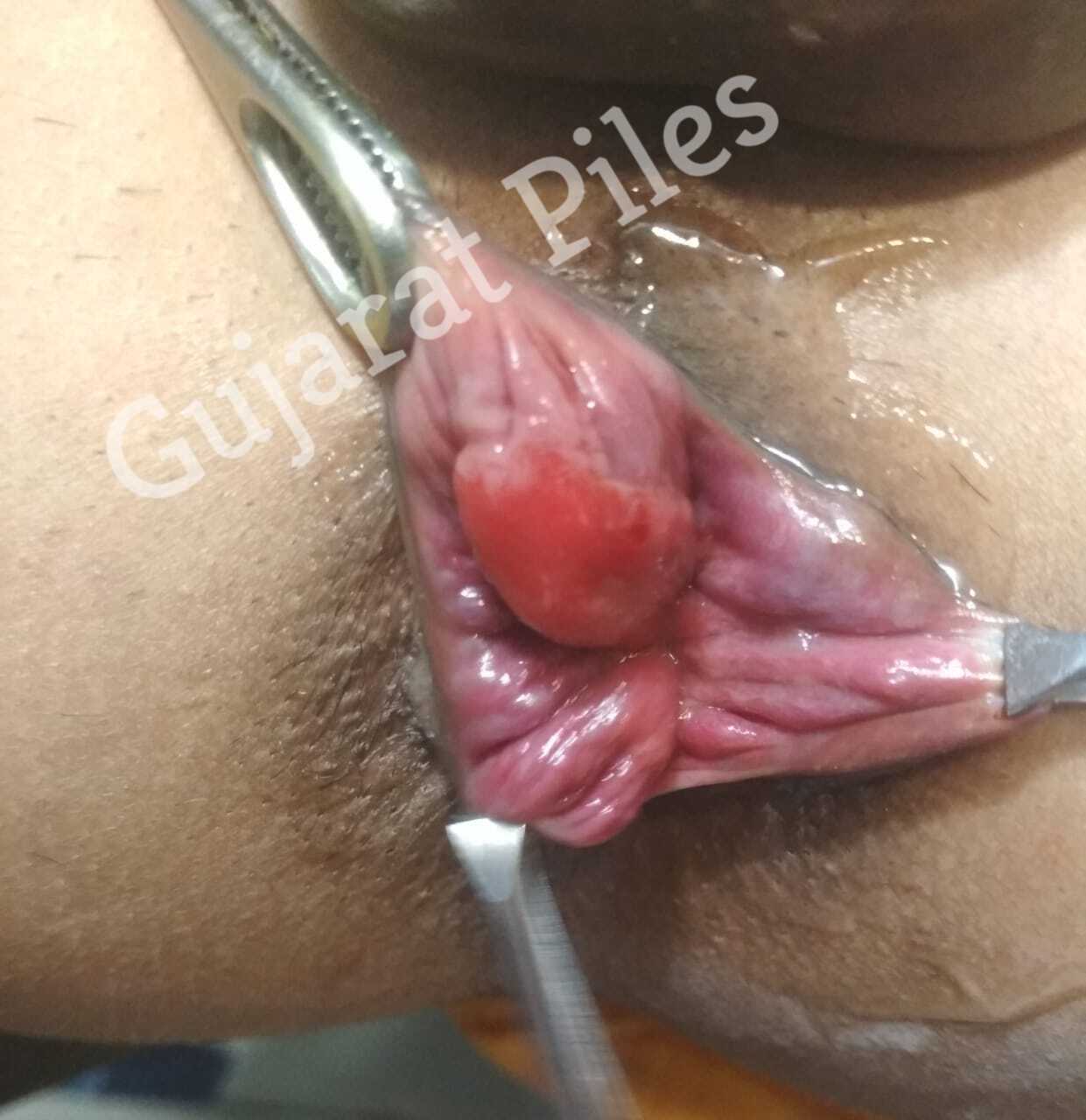
11 o Clock Bleeding Piles
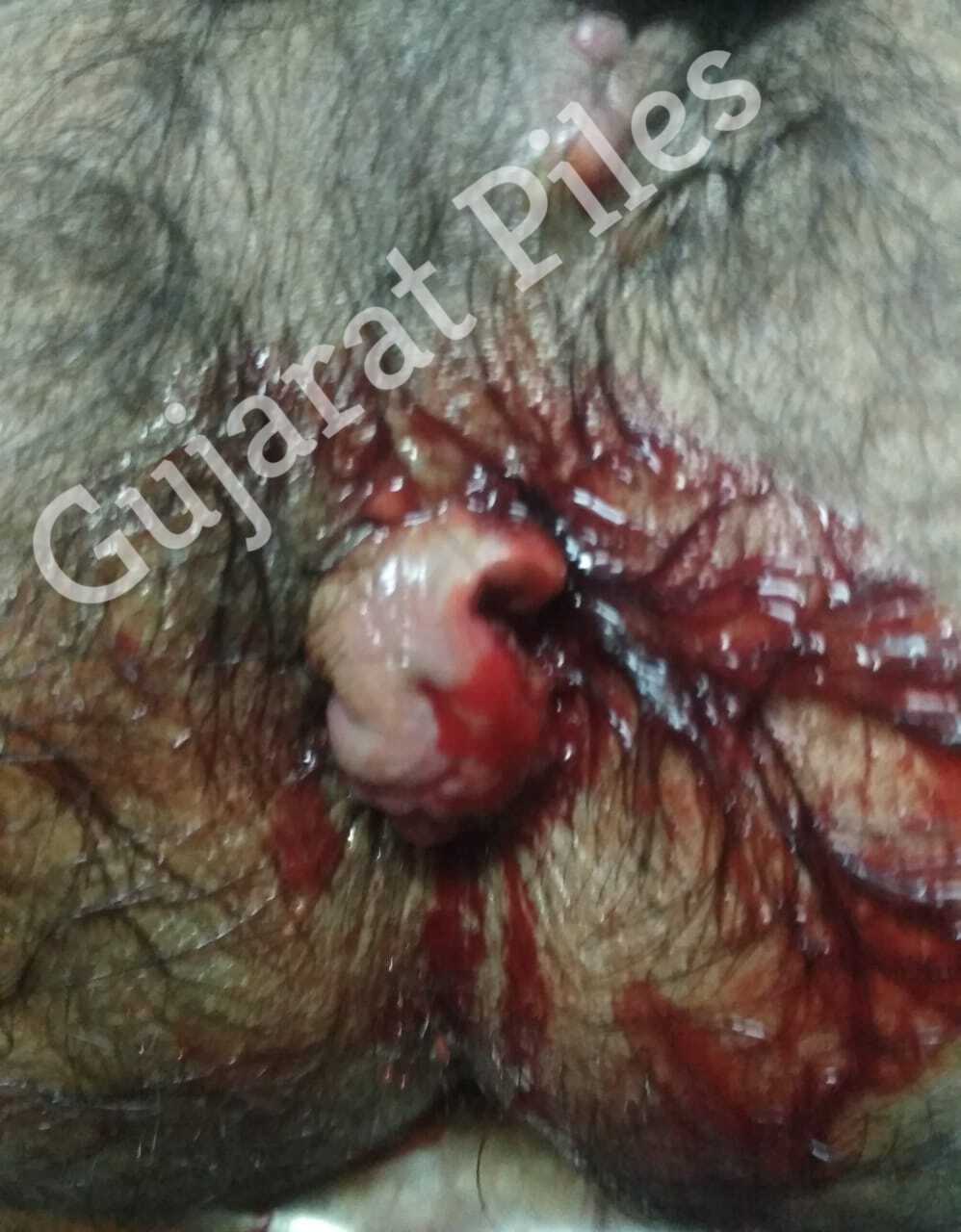
Bleeding Piles Cause of Anaemia
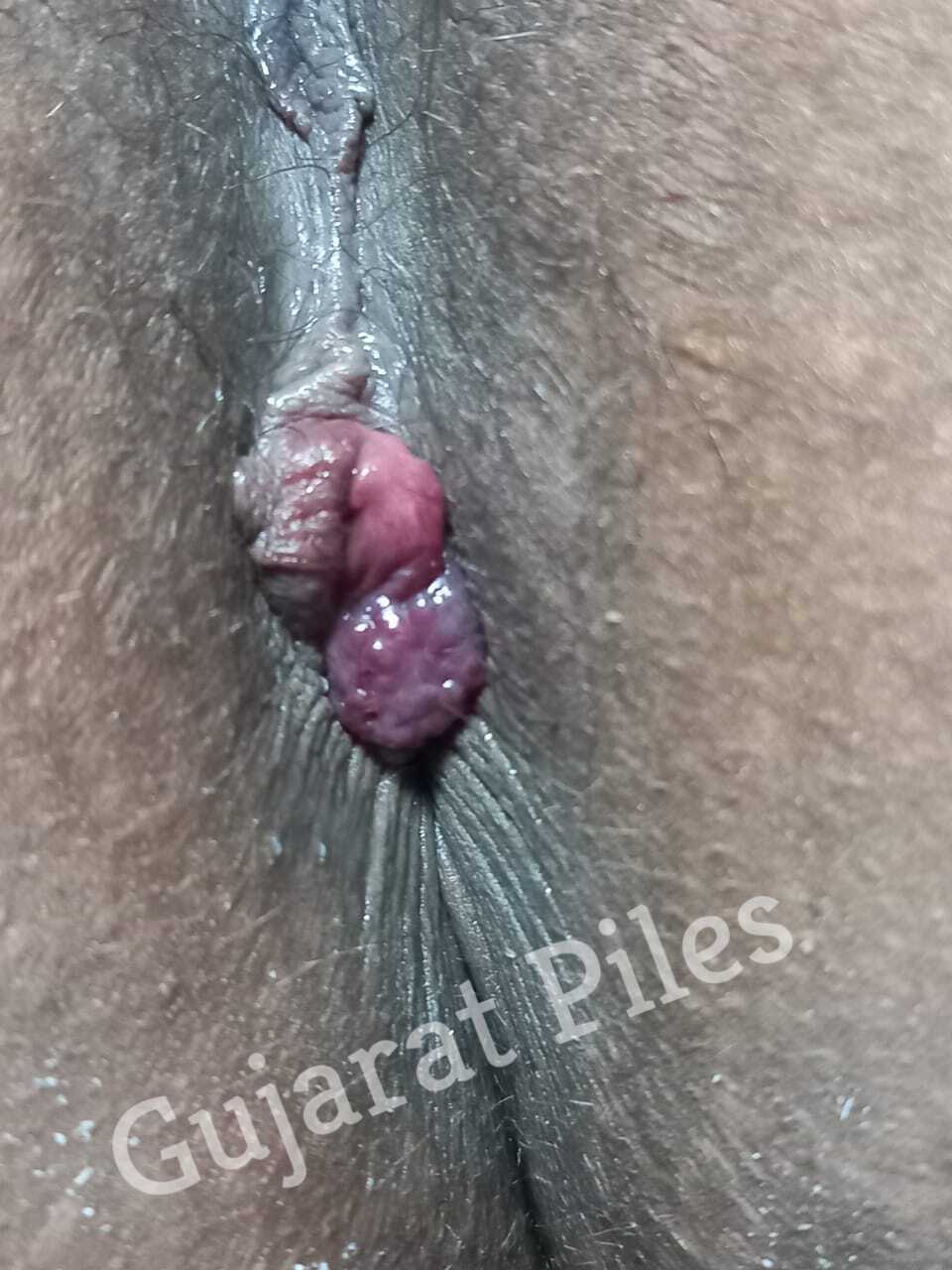
Internal Hemorrhoid
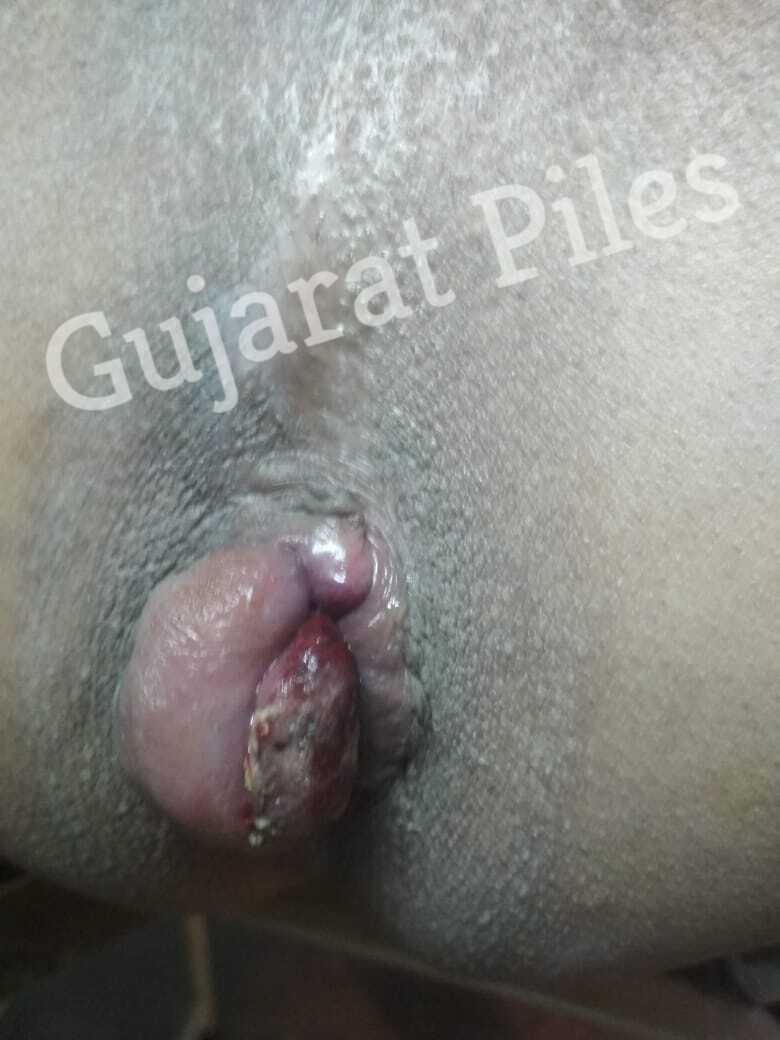
Extro internal hemorrhoids
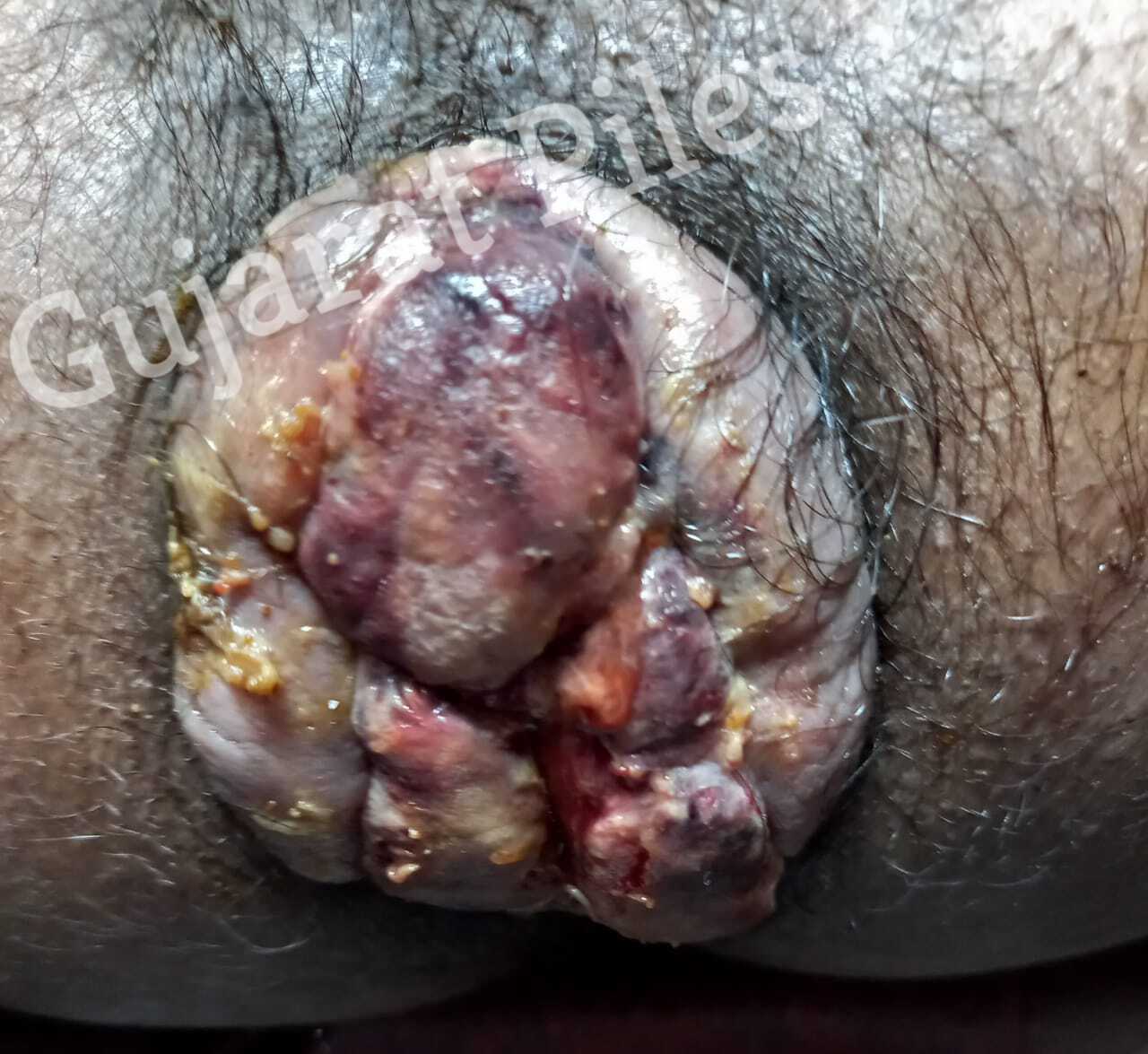
External and Hemorrhoids
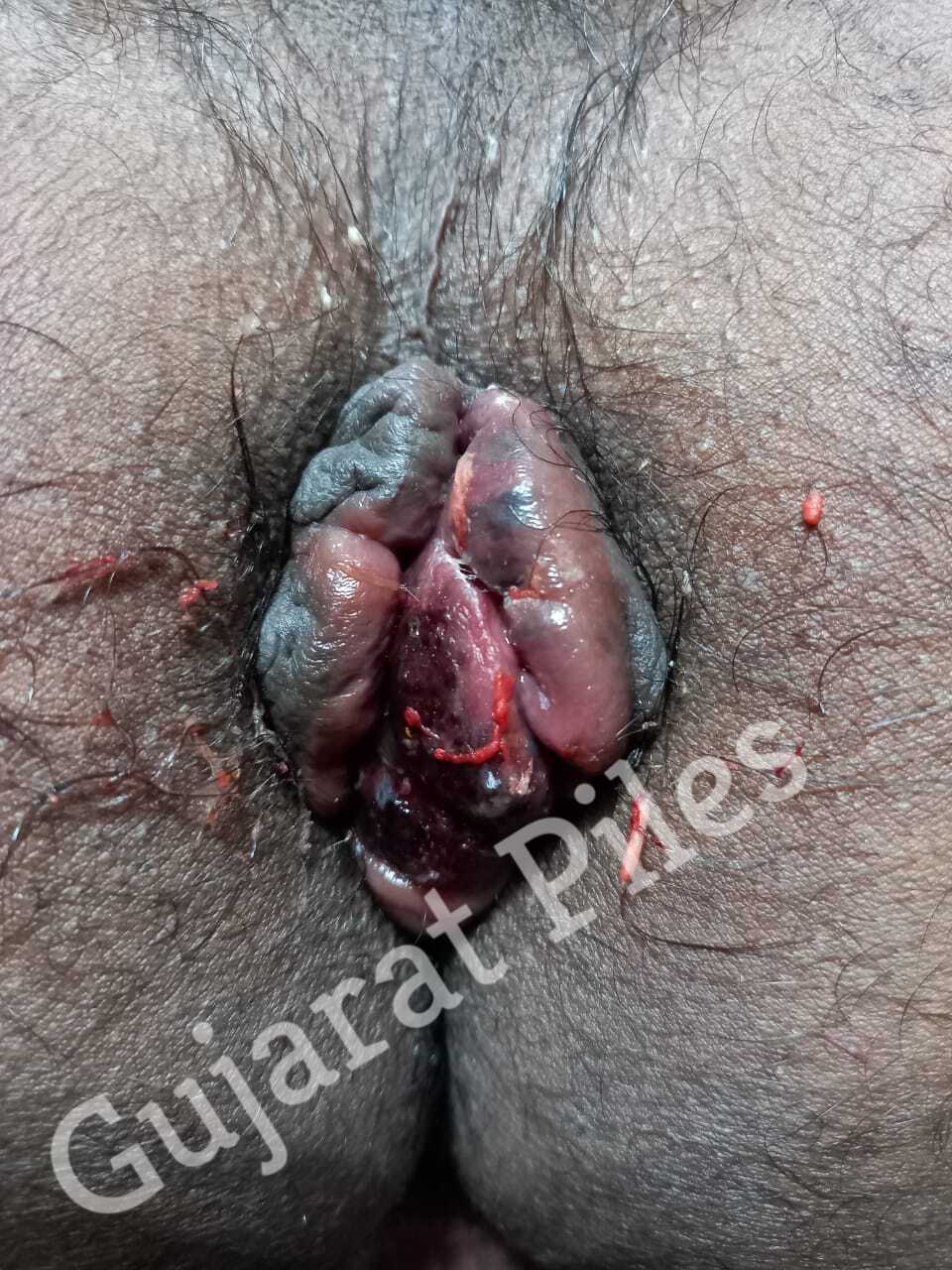
Bleeding Piles
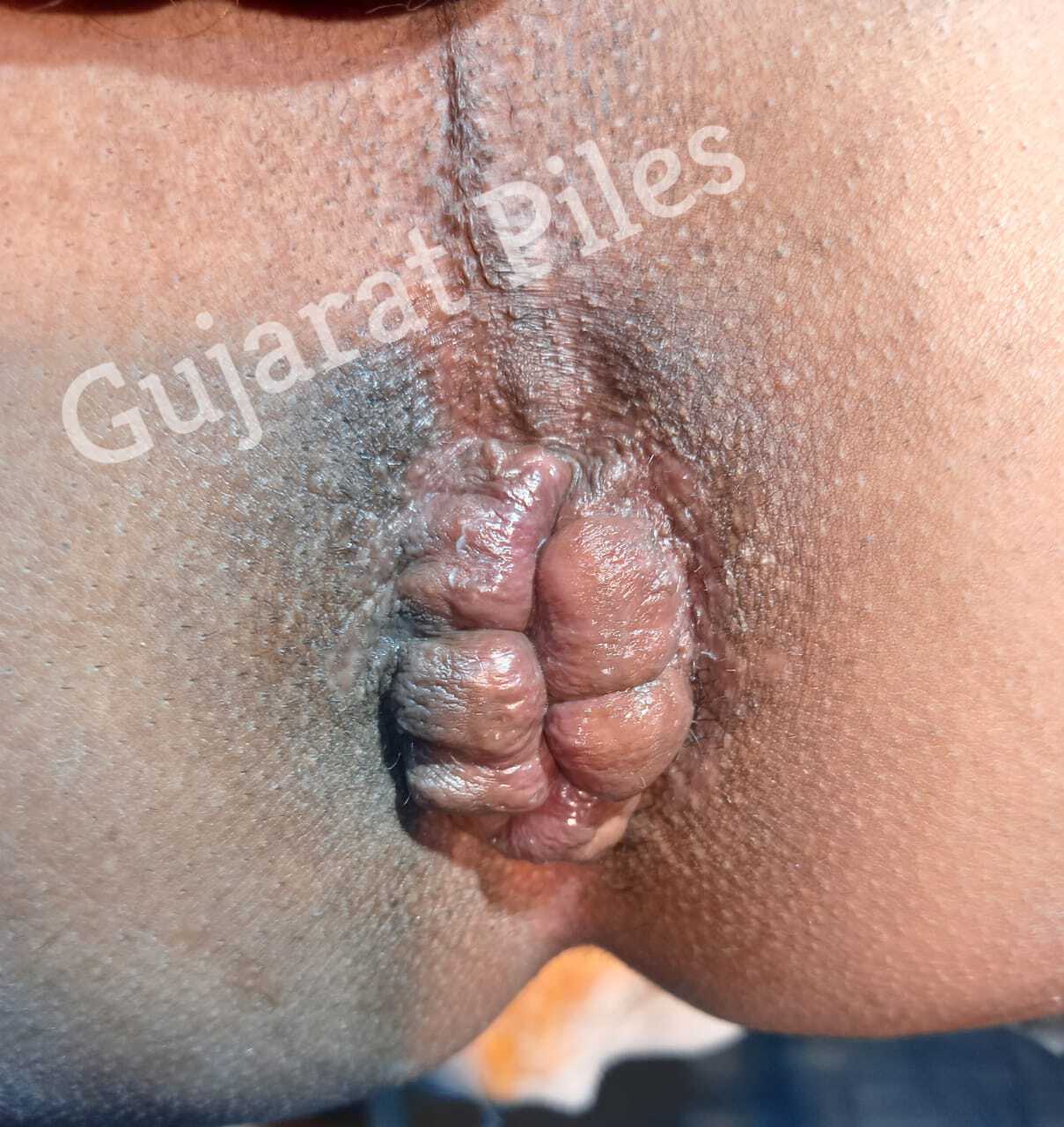
External piles
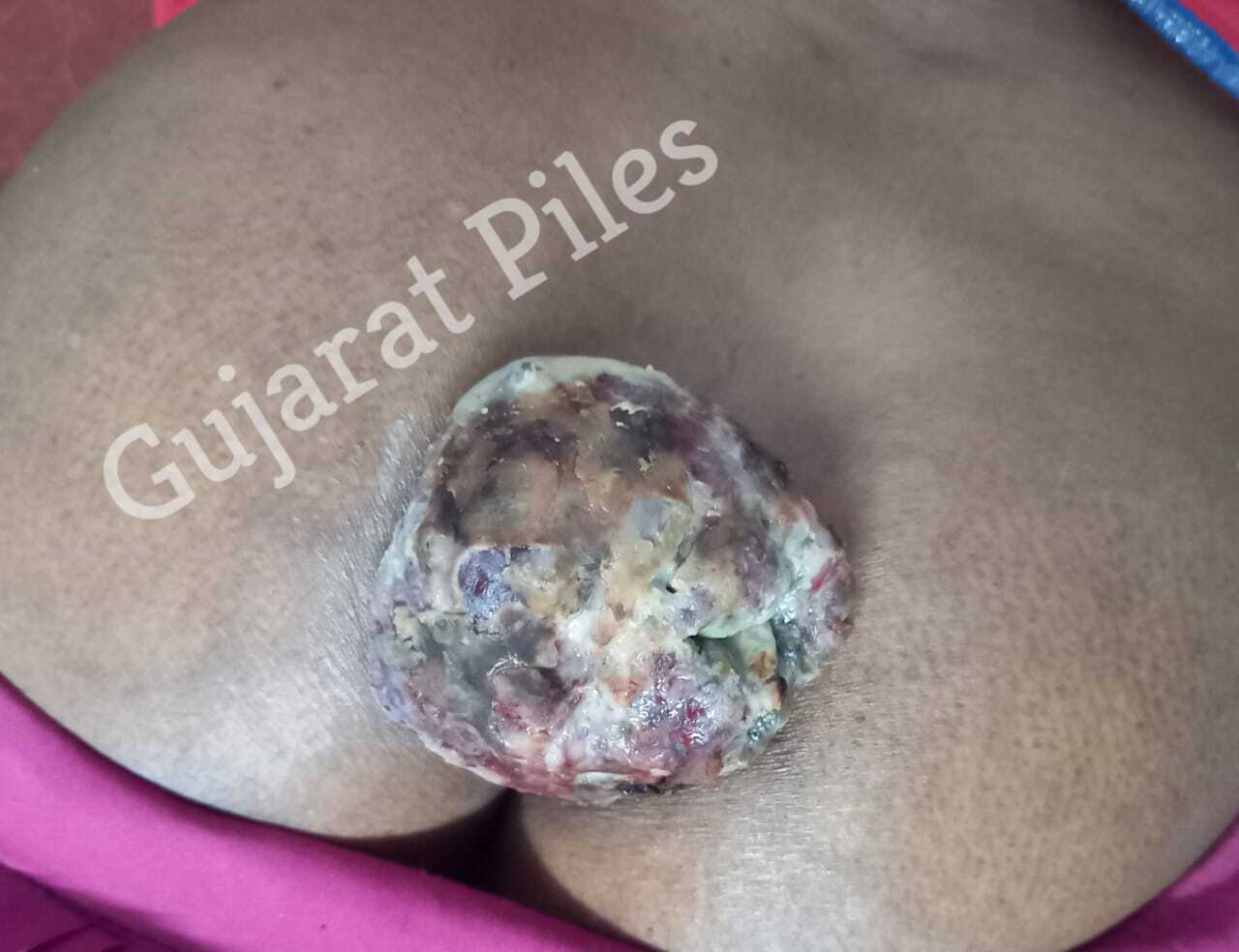
Make an Appointment